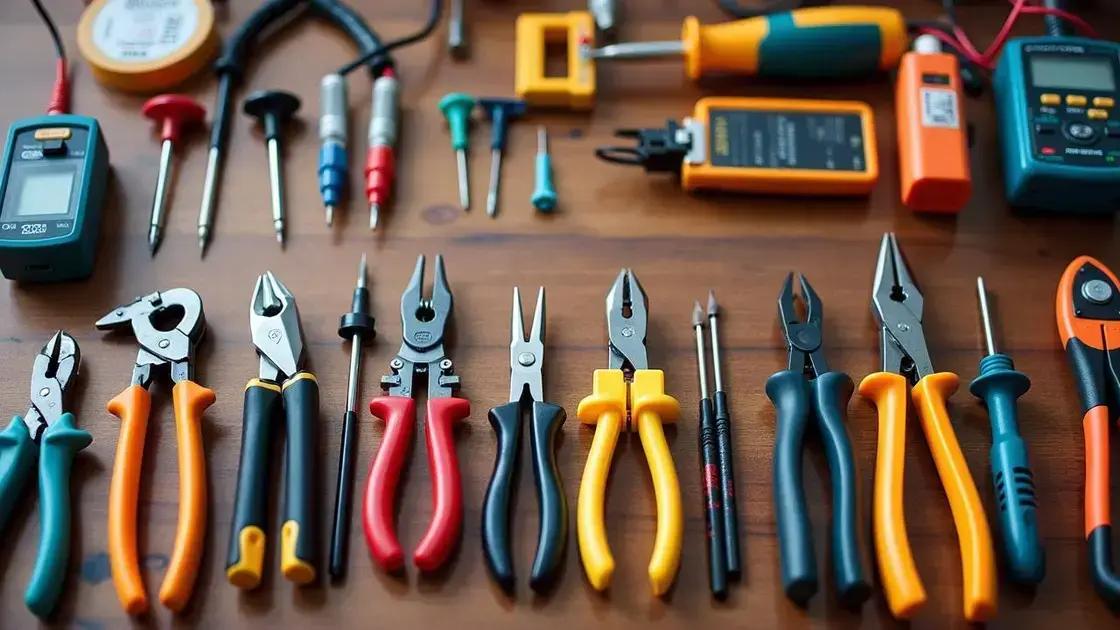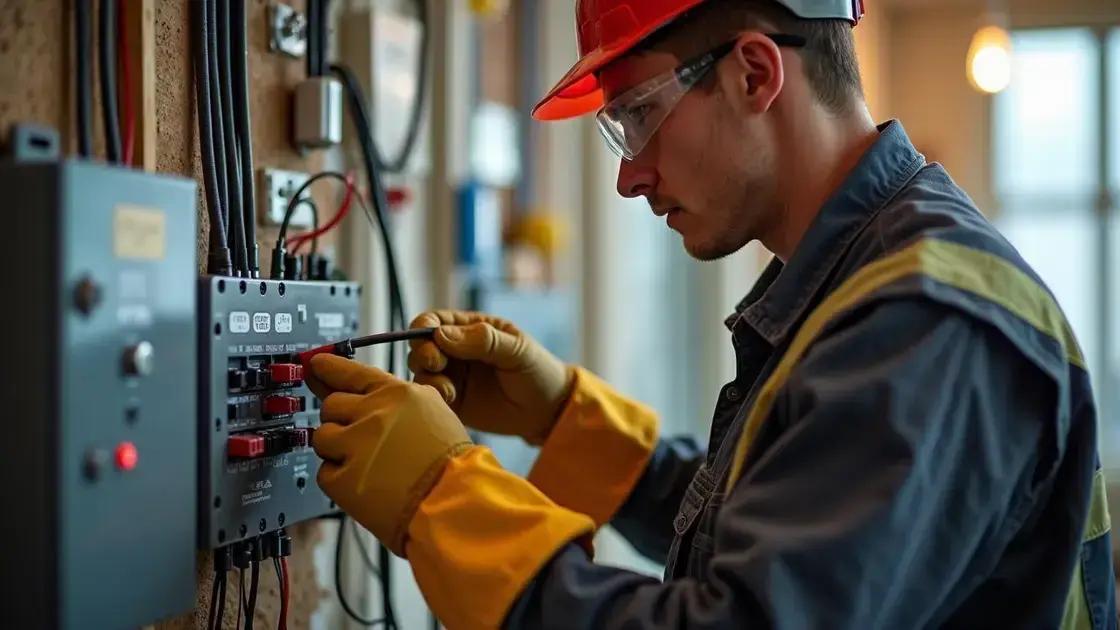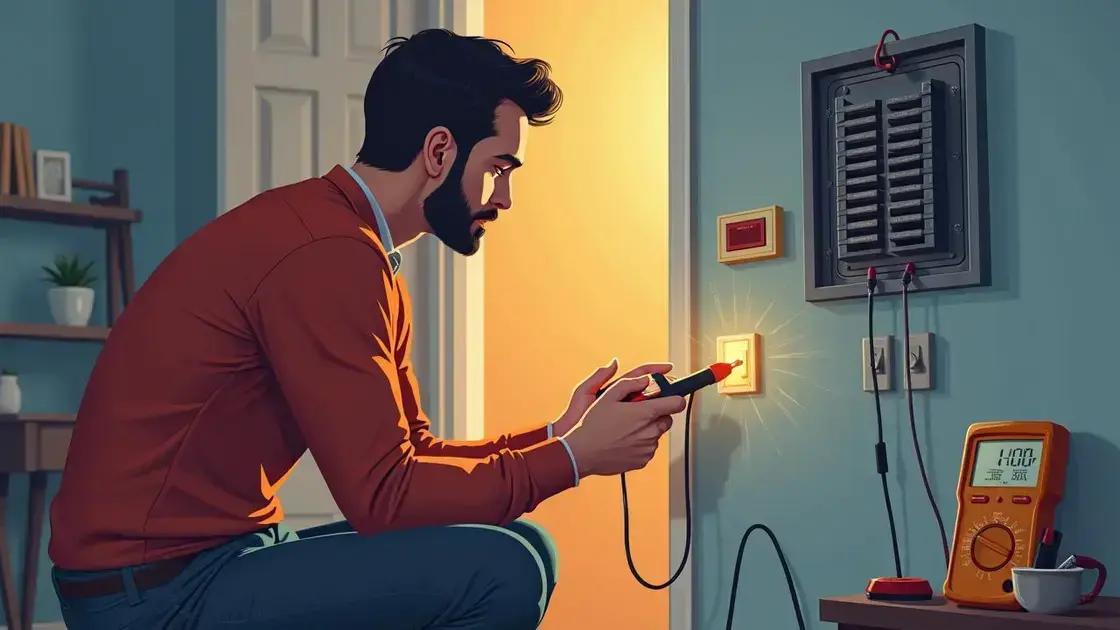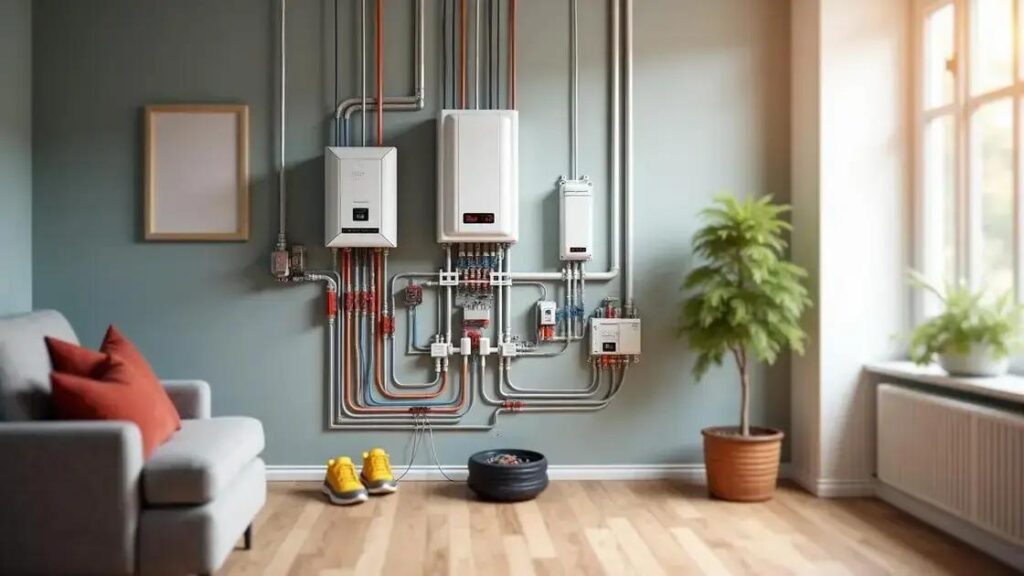To set up an effective circuit at home, understand the basics of electrical circuits, gather essential tools like wire strippers and multimeters, prioritize safety by turning off power and using insulated equipment, and know how to troubleshoot common issues such as tripping breakers and flickering lights.
Setting up an effective circuit at home is essential for powering your devices safely and efficiently. Whether you’re working on DIY projects or just enhancing your home’s electrical system, understanding the basics is key. In this guide, we will discuss the key components of electrical circuits, the tools you need, safety precautions to follow, and troubleshooting tips for common issues.
Understanding Electrical Circuits

Understanding electrical circuits is important for successfully setting up an effective circuit at home. An electrical circuit is a path that allows electricity to flow from a power source to devices that use electricity, like light bulbs or appliances.
Basic Components of Electrical Circuits
1. Power Source: This is where the electricity comes from. Common power sources include batteries and wall outlets. They provide the energy needed for circuit operation.
2. Conductors: Conductors are materials, usually wires, that allow electricity to flow easily. Copper and aluminum are popular choices for electrical wiring.
3. Load: A load is any device that uses electricity, such as lights, fans, or computers. The load converts electrical energy into other forms of energy, such as light or motion.
4. Switch: A switch controls the flow of electricity in a circuit. When a switch is closed, electricity flows; when it is open, the flow stops.
How Circuits Work
The flow of electricity happens when a circuit is completed, meaning there is a continuous loop from the power source, through conductors to the load and back. If there is a break anywhere along the path, the circuit will not function.
Circuits can be series or parallel. In a series circuit, all components are connected in a line, meaning if one part fails, everything shuts down. In a parallel circuit, components are connected across common terminals. This means if one part fails, others can still function.
Importance of Understanding Circuits
Knowing how circuits operate helps prevent accidents and equipment damage. It is crucial to match the right components, ensuring they can handle the electrical load and avoid overheating.
As you plan your setup, remember that basic understanding lays the foundation for safely handling electrical tasks at home. This knowledge will be invaluable as you gather the essential tools for setting up an effective circuit.
Essential Tools for Circuit Setup

To successfully set up an effective circuit at home, having the right tools is essential. Here are the key tools you will need:
1. Wire Strippers
Wire strippers are used to remove insulation from electrical wires. They come in different sizes and can strip various gauge wires. Using the right size helps you avoid damaging the wire.
2. Screwdrivers
A set of screwdrivers, including both flathead and Phillips types, is vital. You will use them to secure wires and connect devices. Opt for insulated screwdrivers to enhance safety.
3. Wire Cutters
Wire cutters are essential for cutting wires to your desired lengths. They provide a clean cut and are easier to use than regular scissors for thicker wires.
4. Multimeter
A multimeter measures voltage, current, and resistance. This tool helps you troubleshoot your circuits by testing electrical components and checking for continuity.
5. Electrical Tape
Electrical tape is used to insulate wires and make safe connections. It’s important to use it to prevent short circuits and maintain safety.
6. Voltage Tester
Voltage testers indicate whether voltage is present in the circuit. This tool enhances safety by allowing you to check wires before handling them.
7. Pliers
Pliers, especially needle-nose pliers, help in bending wires or gripping small components. They provide the needed dexterity when working in tight spaces.
8. Circuit Tester
A circuit tester checks if a circuit is functioning properly. This tool is useful for troubleshooting and ensuring that your setup works as intended.
Having these essential tools will make your circuit setup process smoother and safer. It’s crucial to work with the right tools to avoid mistakes and ensure success.
Safety Precautions to Consider

When setting up an effective circuit at home, safety should always be your number one priority. Here are some key safety precautions to consider:
1. Always Turn Off Power
Before starting your work, make sure to turn off the power at the circuit breaker. This prevents accidental electric shocks and injuries while you work.
2. Use the Right Tools
Only use tools that are designed for electrical work. Ensure they are insulated to reduce the risk of electrical shock. Using improper tools can lead to dangerous situations.
3. Wear Protective Gear
Always wear protective gear such as gloves and goggles. This additional layer of protection helps guard against any flying debris or accidental contact with live wires.
4. Check for Damage
Inspect all wires and tools for any signs of damage before use. Frayed wires or damaged tools can increase the risk of electrical accidents.
5. Never Overload Circuits
Each circuit has a specific load capacity. Never plug too many devices into a single outlet, as this can cause overheating and potentially start a fire.
6. Use Ground Fault Circuit Interrupters (GFCIs)
Install GFCIs in wet areas like kitchens and bathrooms. These devices shut off power if they detect a ground fault, reducing the risk of shock.
7. Follow Local Codes
Always adhere to local building and electrical codes. These codes are in place to ensure safe practices when working with electricity.
8. Be Aware of Your Environment
Keep your workspace clean and dry. Avoid working in wet conditions, as water conducts electricity and increases the risk of shock.
By following these safety precautions, you can minimize the risks involved in setting up a circuit at home. Always prioritize safety to ensure a successful and safe project.
Troubleshooting Common Circuit Issues

Troubleshooting common circuit issues is an important skill when setting up an effective circuit at home. Here are some frequent problems you might encounter:
1. No Power to the Circuit
If there is no power, first check if the circuit breaker has tripped. Sometimes, resetting the breaker can solve the problem. If it trips again, there may be a short circuit or a faulty appliance connected.
2. Flickering Lights
Flickering lights can be caused by loose connections. Inspect the wiring and ensure all connections are tight. If the problem persists, try replacing the light bulb, as it may be defective.
3. Circuit Breaker Trips Frequently
If your circuit breaker trips often, it might be overloaded. Check how much load is on that circuit by counting the devices plugged in. Reducing the number of devices can help.
4. Overheating Wires
Overheating wires indicate a serious issue. This could be due to using the wrong gauge wire or having too much current flowing. Immediately turn off the power and check for signs of damage.
5. Buzzing or Humming Noises
Noises coming from outlets or switches can signal electrical problems. It might be a sign of loose connections or faulty devices. Inspect the area carefully and seek help if needed.
6. Appliances Not Working
When appliances won’t turn on, check the outlet first by plugging in another device. If the second device works, the issue is likely with the appliance itself. If not, check the circuit breaker or connections.
7. Lights Dimming
If lights dim when appliances are switched on, this could indicate an overloaded circuit. It’s important to redistribute the load by moving some devices to other circuits.
8. Ground Faults
Ground faults can occur when moisture is present or when there is a short in the wiring. Installing GFCIs in susceptible areas can help prevent this issue. If you experience frequent ground faults, consult an electrician.
Identifying and troubleshooting these issues can save time and ensure your circuit operates smoothly. Always prioritize safety when addressing problems and do not hesitate to consult a professional.
In Summary: Setting Up an Effective Circuit at Home
Understanding how to set up an effective circuit at home can empower you to take on electrical projects safely and confidently. From learning about electrical circuits to gathering essential tools, every step adds to your knowledge.
By prioritizing safety precautions and knowing how to troubleshoot common circuit issues, you can prevent mishaps and ensure that your electrical setup runs smoothly. Remember, working with electricity requires awareness and respect for the power it carries.
With practice, you’ll be capable of creating a reliable and safe electrical environment in your home, enabling you to enjoy the full benefits of your circuits.
FAQ – Frequently Asked Questions About Setting Up Effective Circuits at Home
What tools do I need to set up a circuit at home?
Essential tools include wire strippers, screwdrivers, wire cutters, a multimeter, electrical tape, a voltage tester, pliers, and a circuit tester.
How do I ensure safety while working with electrical circuits?
Always turn off the power before working, use insulated tools, wear protective gear, and follow local electrical codes.
What should I do if my circuit breaker keeps tripping?
Check for overloaded circuits or faulty appliances. Reduce the load or have an electrician examine the circuit for issues.
Why are my lights flickering?
Flickering lights can indicate loose connections or a failing light bulb. Check the wiring and replace bulbs if necessary.
How can I troubleshoot common electrical issues?
Identify the problem, check connections, and use tools like a multimeter to assess power flow. Always prioritize safety.
What is a GFCI and why do I need it?
A Ground Fault Circuit Interrupter (GFCI) protects against electrical shocks, especially in wet areas like kitchens and bathrooms. It’s essential for safety.













